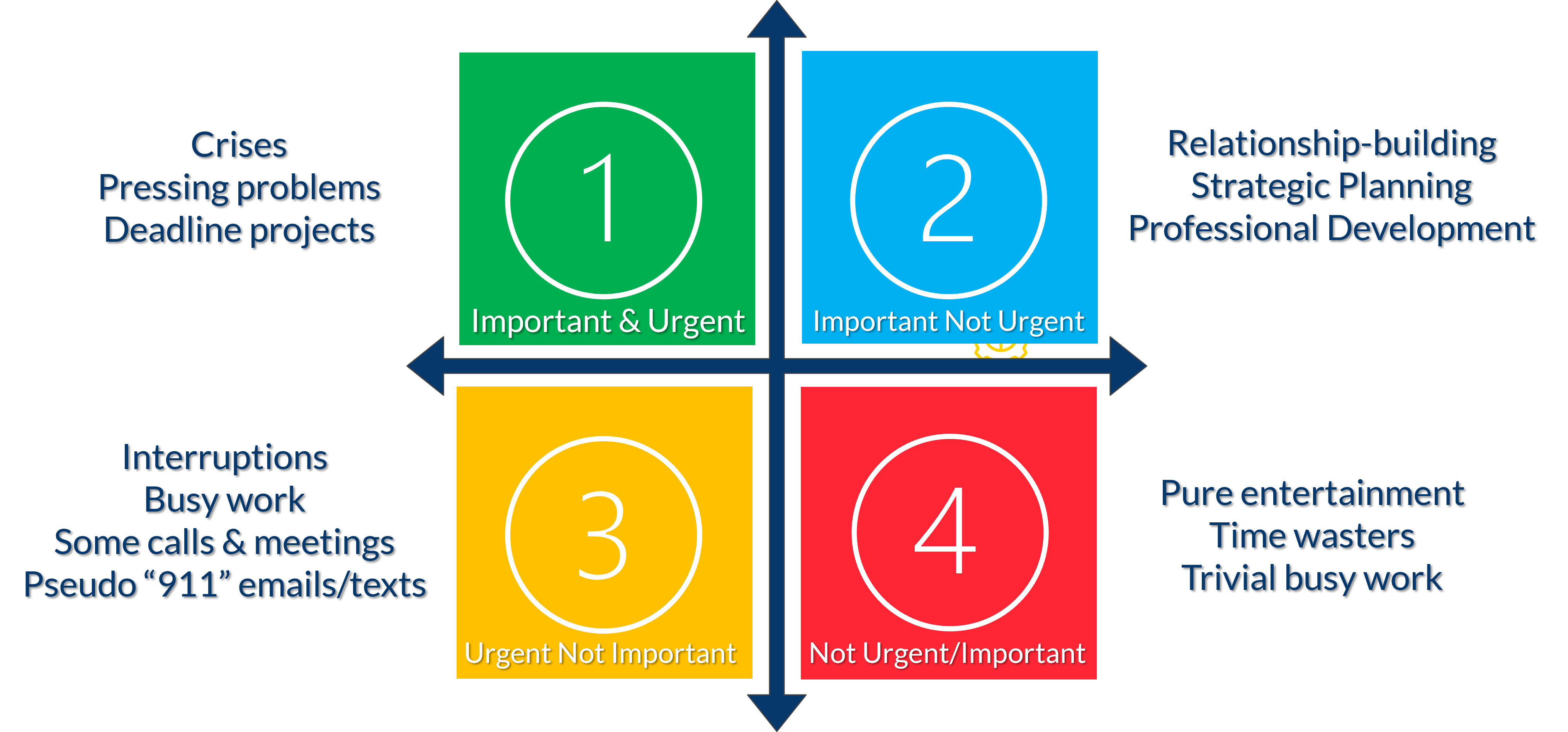Every task that crosses our desk requires an internal decision: is this a NO or is it a GO?
But we often GO on a task based on its perceived urgency rather than its true importance. These two terms sound the same, and to be fair, there's plenty of overlap between them.
Urgent matters are the fires at work that demand our immediate attention. They are the squeaky wheels that need oiling. And if the fire threatens a critical area of the business, or if the sticky wheel brings a key work process to a screeching halt, then these are important matters as well as urgent.
But fires can also erupt in non-critical areas and wheels can begin to stick in minor work processes. When we feel the heat or hear the screeching, we may want to act right away. But deciding between a NO or a GO will require a little more consideration.
In his bestselling book, 7 Habits of Highly Successful People, Stephen Covey put it this way, “Urgent matters are usually visible. They press on us; they insist on action. They’re often popular with others. And often they are pleasant, easy, and fun to do. But so often they are unimportant!”
How do we decide if a task is a GO or a NO (or at least a NOT YET)? A good model to use is Stephen Covey’s quadrants, also referred to as Eisenhower’s Urgent-Important Principle.

There are 4 boxes in the Important vs. Urgent matrix:
Important and urgent;
Important but not urgent;
Urgent but not important; and
Not important and not urgent.

The numbers give you an idea of the priority you should give to tasks in each box.
Box 1 tasks require your immediate attention, like emergencies in key work areas and critical deadlines. These should be given top priority in your schedule.
Box 2 should be your second priority, because it involves tasks that support your professional development and advance your organization’s key long-term goals. Tasks may include relationship-building activities and strategic planning meetings. Highly effective people may work on box 1 items first, but then they direct as much energy and focus to box 2 as possible.
Box 3 tasks may feel urgent, but they're not necessarily important in terms of long-term goals. Examples would be non-critical interruptions, some meetings, and the pseudo-“911” emails or slack messages that may pop up. Because they are unimportant, these items slip to 3rd place (or lower) in terms of priority.
Box 4 tasks are neither important nor urgent. This would include time wasters and things you do for pure entertainment, like scrolling social media feeds, watching Netflix, etc. You should spend zero work time here.
Important caveat: this doesn't mean that you should skip work breaks or strip your office of any and all entertainment equipment. A CEO once asked me, "We have a pool table set up in our lounge and use it to blow off steam and spend time together. Are you saying we should toss it out?"
No, that's not what I'm saying, for two reasons. First, playing together can be a great way to nurture relationships and build team camaraderie - clearly, these are box 2 objectives. Second, everyone needs to take a break once in a while. In fact, we could make a research case for putting work breaks in box 2 since studies show that regular breaks boost productivity and employee engagement. And if you can do some relationship-building at the same time, all the better.
Thought Questions About Importance vs. Urgency
- If you were make an estimate right now, how much of your work day is spent in each box?
- How much of your day or week is spent on the long-term goals described in box #2?
- How much of your day or week is spent fighting urgent but unimportant fires?
- How much of your day or week is spent on unimportant, non-urgent activities?
4 Strategies to Differentiate the Urgent vs. the Important.
As a general rule of thumb, invest most of your time, energy, and the most productive part of your day into boxes I & 2. Here are some specific strategies to use in each box.

- DEAL first with important & urgent tasks. These are the fires worth fighting and the wheels worth greasing. But once you are done here, move on to step #2:
- DIRECT ENERGY and FOCUS to the important tasks that impact long-term objectives for you and your company.
- As far as possible, try to DELAY or DELEGATE the urgent but unimportant tasks.
- DROP box 4 activities during active work time, but use them for recreation and restoration.
More Thought Questions About Importance Vs. Urgency
- Design your ideal day and week. How will you build intentional time in your calendar for boxes 1 and 2?
- Where do you think you will get most tripped up in staying on task?
- What will you do to delay/delegate tasks in box 3?
- What will you do to drop tasks in box 4 during active work time?
Conclusion and More Resources
For more tools for managing your time and priorities, you might be interested in my workbook, Chasing the Right Rabbit: How to Boost Productivity and Achieve Your Most Important Goals, available at WellMind Solutions (my Etsy store).

